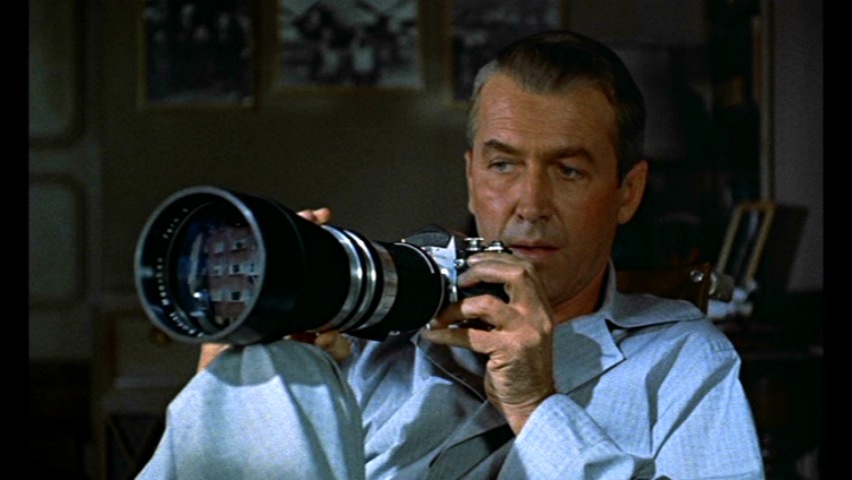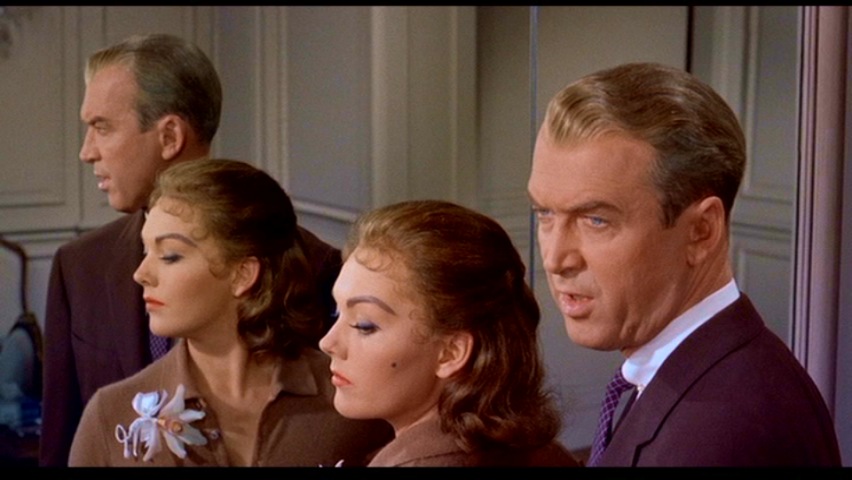Disclaimer and spoiler alert: Both of the movies which I am about to discuss are far too complex to be reduced to one theme. Books can and have been written to tease out all the layers in Hitchcock’s filmography, this little essay is a focused attempt to think about one part of two great movies. Also, I do give away the endings of both movies.

Of all the themes Alfred Hitchcock wrestled with in his filmmaking career, the one I find most interesting is the nature of reality, and how what appears to be true may in fact be false. He built many of his movies around a character who is falsely accused of a crime and needs to clear his or her name, drawing the suspense from the race against the clock. He also liked to subvert audiences’ expectations, and I suspect that some of his directorial habits, like inserting cameos of himself and frequent use of obviously artificial rear projection in lieu of filming outdoors, were at least partly to remind the audience that what they were seeing on the big screen was in fact a fantasy and not reality.
Since Hitchcock’s entire job was based on manipulating people’s emotions and senses of reality for a brief period of time while they watched his movies, I find the moral sense he showed in wrestling with those concepts quite admirable. Two movies that are particularly pointed on the subject of reality vs. fantasy came out within four years of each other and even starred the same actor: Jimmy Stewart. Those films are Rear Window (1954) and Vertigo (1958). And unlike his mistaken identity movies where the audience knows the truth either from the start or learns it early in the film, these movies keep both the main character and the audience in the dark, blundering along and groping for reality somewhere in the shadows.
To review the basic plots: In Rear Window, Stewart’s character L.B. Jeffries is a photojournalist stuck in his apartment with a broken leg thanks to getting a bit too close to the action at a car race. Being a professional watcher of people and events, he resorts to spying on all his neighbors across a Greenwich Village courtyard, and becomes obsessed with the idea that one of them, a Mr. Thorvald, has murdered his wife. His visiting caregiver, his girlfriend, and a buddy from the police force all sniff at the obsession, until one by one they come to agree with him. The question is, is Jeffries truly right?
Similarly, in Vertigo, Stewart plays a police detective named Scottie Ferguson on leave while he processes an accident that led to the death of a fellow officer and caused him both mental and physical injury. Scottie is hired by an old college friend to trail said friend’s wife, Madeline Elster, who is prone to wandering San Francisco in a fugue state, presumably because she is possessed by her great-grandmother, who committed suicide in the 1850s. Scottie becomes obsessed with Mrs. Elster, or is it the reincarnation of Carlotta Valdez? Or someone completely different, say a girl from Salina, Kansas?
Throughout Rear Window, Jeffries draws his own conclusions about the people across the courtyard without them knowing they are even being observed. He gives them nicknames like “Miss Torso” and “Miss Lonelyheart”. At the end of the movie, while Jeffries has proven to be justified in his suspicions of Lars Thorvald, we also see that some of his other uncharitable ideas, like that of Miss Torso being an uncommitted playgirl, are incorrect. While Jeffries saw her throw large parties, there is a small but noticeable moment when a uniformed man appears, clearly a boyfriend or husband home from military service. In this way, Hitchcock reminds us that even though Jeffries got the big question right, his overall approach to the world by engaging people at a distance still created a distorted perspective.
While Jeffries is drawing his own conclusions, for better and worse, Scottie Ferguson is being carefully manipulated to see what he is supposed to see: a beautiful woman of means wandering through the world. Two-thirds of the way through the film, we in the audience are shocked to learn that it was all a performance, a play within a play to provide an alibi for a murder, by making the murder a suicide, a suicide witnessed by a police detective of all things. But Scottie doesn’t learn this when we do and is utterly wrapped up in the idea of his lost love. Unlike Jeffries, Scottie shows no doubt about his ideas. He is absolutely invested and will tolerate no challenges. Ultimately, he destroys Judy Barton and himself trying to recreate Madeline Elster.

Where is all this going?
In both films, the main character is at a loose end. Without the normal routine of a career, family, and friendships to keep them grounded in a world populated by real people with real needs and real responsibilities, Jeffries and Scottie are free to draw within themselves and let their imaginations run wild until fact and fancy become almost indistinguishable. Fortunately for Jeffries, his obsessive fantasy proves to be fact. Tragically for Scottie, his is not.
But there’s a bit more here than just Jeffries being lucky in his idea, because has something that Scottie does not. Even if Jeffries had been wrong, his nurse Stella and girlfriend Lisa are there to keep him grounded in reality and challenge his assumptions. Stella chastises Jeffries for his voyeuristic tendencies, while Lisa serves up a more quiet observation on how he’s so wrapped up with spying on the outside world and imaging what those he observes are feeling, that he’s lost touch with her and her real feelings.
In Vertigo, Scottie pulls away from his friend Midge the further down the rabbit hole he goes. She even resorts to spying on him and copying herself into the painting of Carlotta Valdez to get his attention, but he’s already gone.
In Inception, a movie that follows the Hitchcockian tradition of asking big serious questions with a big entertaining film, Christopher Nolan has the characters use a personal totem to track when they are in the real world and when they are in a dream world. Leonardo DiCaprio’s character uses a pocket sized top. In the real world a top will stop spinning due to friction, so if the top keeps spinning, and spinning, and spinning, Leo and the audience know he’s dreaming – his mind is unmoored from reality.
In Rear Window, Vertigo, and in real life, other people are the key totem for reality, sometimes on their own, sometimes because they can help interpret physical evidence. Lars Thorvald knows he killed his wife, and there’s the lifeless corpse of Mrs. Thorvald out there somewhere to prove it. Judy Barton and Gavin Elster know that Scottie Ferguson never met Madeline Elster, just Judy in costume, and there’s a grey suit in Judy’s closet and an heirloom necklace in her dresser to prove it.
The relevance of this idea is all too easy to see, especially in the loneliness and unemployment of the COVID-19 quarantines. We live in a world that is becoming ever more atomized and we’re disconnected from those around us. As a result, we lean ever more on our own preconceptions about the world without ever encountering a challenge to our assumptions, because everything we see is at a distance, like Jeffries through his rear window.
And that is assuming we’re observing the real world, but what if we’re observing a fabricated world of media, social and otherwise? In our separation from true human connection, we become vulnerable like Scottie Ferguson to manipulation by shrewd and frequently malevolent agents who want us to believe what is most beneficial for their own goals, rather than the truth. And once one is completely wrapped up in a false idea, it’s very hard to become unwrapped.
So seek reality. Fight for it. Keep your head above the ocean of lies swarming through the world. Maintain real relationships.
The alternative is terrifying.

Recent Comments